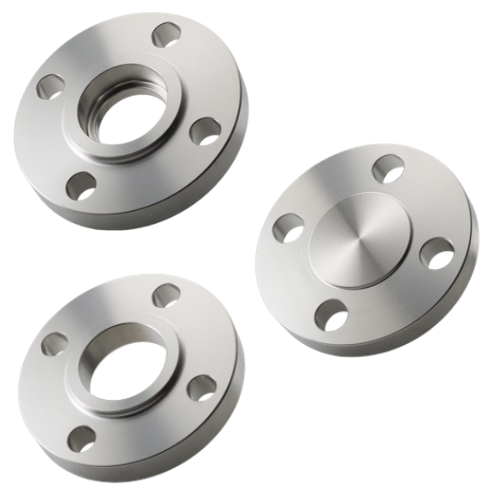At the heart of every well-constructed piping system lies a crucial component: pipe flanges. These piping components play a pivotal role in joining pipe, valves, and fittings to form a piping system. They provide a secure and leak-proof connection while allowing for easy assembly, disassembly, and maintenance of the system.
When selecting a pipe flange for your application, consider the different types, sizes, and materials that are available. One important factor to consider is the type of face of the flange. The flange face type determines the surface finish of the pipe flange, which is in direct contact with both the mating flange and gasket. This surface finish is integral to achieving proper alignment, sealing, and pressure containment within piping systems.
The flange face type you choose can significantly impact the overall performance and reliability of your system. Choosing the right flange face type is crucial in meeting the unique requirements and operating conditions of your system. This will ensure optimal performance and longevity.
In the vast world of piping, two common types of pipe flange face types stand out: raised face vs flat face. In this blog, we delve into the differences between these two flange face types.
WHICH PIPE FLANGE IS RIGHT FOR MY APPLICATION?

Raised (RF) pipe flanges have an elevated surface above the bolting circle where the gasket is positioned. This raised area creates a seal when compressed against a soft, flat, or semi-metallic gasket. Raised face flanges are designed to concentrate pressure on a smaller gasket area which gives the joint added strength to contain higher pressures.
Additional benefits and features of raised face flanges include:
Raised face pipe flanges are often used by those operating in demanding and high-stress environments where integrity is a "non-negotiable". Their raised surface offers added protection against erosion and corrosion which extends the lifespan of the piping system. It also reduces the need for frequent maintenance. They are used in critical applications such as oil & gas pipelines, chemical plants, and power generation facilities.
The most common types of raised face pipe flanges include blind, slip-on, and socket weld.
EXPLORE OUR RAISED FACE FLANGES
Flat face (FF) pipe flanges are characterized by their smooth, even surface without any protrusions. To ensure a secure and proper seal, they are paired with non-metallic gasket. This gasket provides full contact across the entire flange surface, spanning from its inner diameter to outer diameter. Flat face flanges are used to prevent the pressure exerted on the pipe flange during bolt torquing from causing a bending movement that could lead to breakage.
Additional benefis and features of flat face pipe flanges include:
This flange face type is often used in applications where space constraints dictate the installation layout such as plumbing and water treatment facilities.
The most common types of flat face pipe flanges include blind, lap joint, slip-on, and weld neck.
Even though raised face and flat face flanges may differ in their design and application, both play integral roles in piping systems. Prior to selecting your pipe flange and flange face type, be sure to consult your project team on the requirements of your piping system.
When selecting the right pipe flange and face type for your application, there are several factors to consider including:
The type of pipe flange and face type you select plays a critical role in the success of your project. It should ensure that your connection is secure and long-lasting. Interested in learning more about pipe flanges? Contact our team of experts at Merit Brass today!
Author: Hedy Hemlick, Merit Brass Marketing Coordinator
Flange Faces Explained |saVRee
RF vs FF Flanges: What's the Difference? | Commercial Filtration Supply
Raised Face Flange vs Flat Faced Flange | Coastal Flange
Raised vs Flat Faced Flanges and Their Uses | Lynco Flange & Fitting
Three Most Common Types of Flange Faces | Flat, Raised, RTJ | Precision Piping Products
3/28/2025 11:50:27 AM